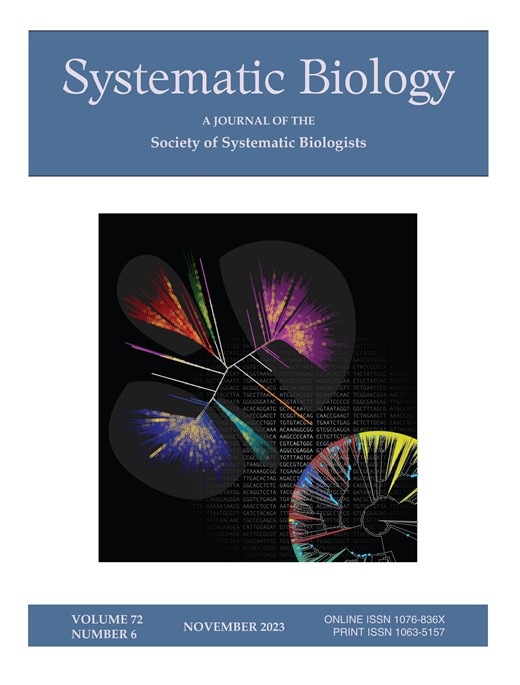Species Diversification in the Sky Islands of Southwestern China Revealed by Genomic, Introgression and Demographic Analyses of Asian Shrew Moles.
IF 5.7
1区 生物学
Q1 EVOLUTIONARY BIOLOGY
引用次数: 0
Abstract
The Mountains of Southwest China, a global biodiversity hotspot, have a unique "sky island" landscape with high diversity of both ancient and recent-formed species. While their distribution patterns offer significant insights into diversification processes, the complex geological and climatic history, combined with dynamic histories of gene flow in endemic taxa, make unravelling this history challenging. This study focuses on Asian shrew moles (genus Uropsilus), an ancient group endemic to this region with an unresolved taxonomic system. By combining phylogenomic, introgression and demographic history analyses, we investigated the historical patterns of species diversification in this genus. We detected phylogenetic discordances among rapidly diverged lineages, driven by incomplete lineage sorting, both recent and ancient gene flow, and ghost introgression. The gene flow patterns revealed strong genetic isolation in the Hengduan Mountains region, contrasted by more extensive dispersal or connectivity in areas to its east, while suggesting potential ring-like diversification around the Sichuan Basin. Demographic history indicated that rapidly diverged lineages south of the Yangtze River exhibited significantly different responses to climatic fluctuations compared to other lineages, with the East Asian monsoon likely driving their radiative differentiation and dispersal. Our study demonstrates the impacts of mountain uplift, climatic changes, and the connectivity of sky island refugia in shaping the diverse patterns of species differentiation and their distribution. [phylogenomics; introgression; Asian shrew moles; demographic history].亚洲鼩鼱基因组、基因渗入和人口统计学分析揭示中国西南天空群岛物种多样性。
中国西南山区是全球生物多样性热点地区,拥有独特的“天空岛”景观,古代和现代物种多样性都很高。虽然它们的分布模式为多样化过程提供了重要的见解,但复杂的地质和气候历史,加上地方性分类群中基因流动的动态历史,使得解开这一历史具有挑战性。本研究的重点是亚洲鼩鼱鼹鼠(Uropsilus属),这是该地区特有的一个古老类群,分类系统尚未确定。通过系统基因组学、基因渗入和人口统计学分析,研究了该属植物物种多样化的历史模式。我们发现在快速分化的谱系中存在系统发育不一致,这是由不完整的谱系分类、现代和古代基因流动以及幽灵渗入所驱动的。基因流动模式显示横断山脉地区具有较强的遗传隔离性,而横断山脉以东地区则具有较广泛的分散或连通性,表明四川盆地周围存在潜在的环状多样化。人口统计历史表明,长江以南迅速分化的谱系对气候波动的响应明显不同于其他谱系,东亚季风可能推动了它们的辐射分化和扩散。研究结果表明,高山隆升、气候变化和天岛避难所的连通性对物种分化和分布格局的影响。[phylogenomics;渐渗现象;亚洲鼩鼱;人口历史)。
本文章由计算机程序翻译,如有差异,请以英文原文为准。
求助全文
约1分钟内获得全文
求助全文
来源期刊

Systematic Biology
生物-进化生物学
CiteScore
13.00
自引率
7.70%
发文量
70
审稿时长
6-12 weeks
期刊介绍:
Systematic Biology is the bimonthly journal of the Society of Systematic Biologists. Papers for the journal are original contributions to the theory, principles, and methods of systematics as well as phylogeny, evolution, morphology, biogeography, paleontology, genetics, and the classification of all living things. A Points of View section offers a forum for discussion, while book reviews and announcements of general interest are also featured.
 求助内容:
求助内容: 应助结果提醒方式:
应助结果提醒方式:


